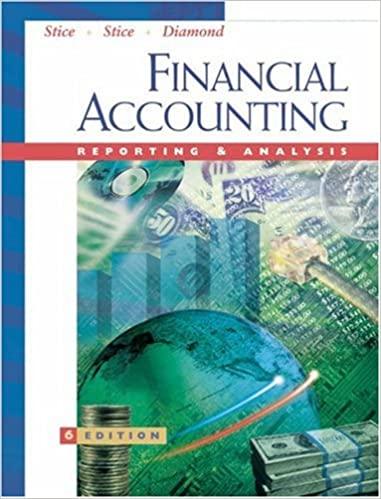Johns Inc. purchased a canvas stretcher at a cost of $16,000 at the beginning of 1999. Johns
Question:
Johns Inc. purchased a canvas stretcher at a cost of $16,000 at the beginning of 1999. Johns estimated that the canvas stretcher would last four years and have no residual value. Johns decided to use straight-line depreciation. Three years later, at the end of 2001, Johns sold the canvas stretcher for $10,000.
Required
a. Calculate the book value of the canvas stretcher at the end of 1999 and the end of 2001, prior to its sale.
b. Calculate the gain or loss on the sale of the canvas stretcher.
c. Calculate the income statement effects, assuming that Johns decided to give the canvas stretcher to a charitable foundation.
d. Calculate the gain or loss on the sale of the canvas stretcher, if Johns had originally decided to use the sum-of-the-years’-digits depreciation method.
e. Assume that Johns originally thought that the stretcher would have only a three-year life, but that its residual value would be $10,000. In other words, Johns made perfect predictions in 1999 about the life and value of the canvas stretcher at the end of 2001. Compute the gain or loss and compare it with your answer in part d.
f. Assume an alternate scenario for the donation of the canvas stretcher to a charitable foundation. What if, through this gift, Johns would realize significant tax benefits, especially by claiming that the market value of the canvas stretcher was actually $50,000? This high value could presumably be justified because of its collectible value, having been used by such a popular artist.
Comment on the ethical implications of the disposal decision and of the valuation decision.
Step by Step Answer:

Financial Accounting Reporting And Analysis
ISBN: 9780324149999
6th Edition
Authors: Earl K. Stice, James Stice, Michael Diamond, James D. Stice





